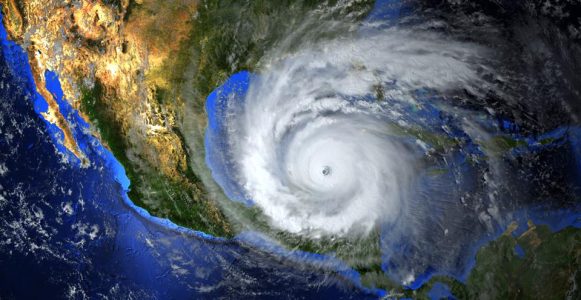Original Article by National Post
There is no regimented naming system for terrorist attacks, shipwrecks or wildfires. But long before a storm ever morphs into a killer hurricane, it’s already bearing a human name given to it by the World Meteorological Organization. Here’s a brief outline of why the WMO does this, and why the hurricane about to make landfall on the U.S. east coast is named Flo.
It’s easier to run from something with a name
When a hurricane effectively wiped Galveston, Texas from the map in 1900, locals knew it only as “the storm.” Only later would Galveston’s shattered survivors come to call it the “Great Storm of 1900.” As storm forecasting improved in the 20th century, an emerging storm would be identified based on its coordinates, meaning that a storm like Hurricane Florence would bear a clunky name along the lines of “the Category 3 storm at 30.4 N 71.8 W.” Only after the Second World War did it become official policy to give them names. “The use of easily remembered names greatly reduces confusion when two or more tropical storms occur at the same time,” reads the longstanding National Hurricane Centre explanation. Storms are named in chronological order from one of six lists of 21 names, which are rotated each year. Hurricane Florence got its name simply because it was the sixth major storm of the season, and so was given the sixth name on the 2018 list. If it had started hitting radar screens just a few days earlier or later, it could just as easily have been named Gordon, Ernesto or Debby. Names are recycled from year to year, but if they’re tacked onto a particularly destructive hurricane they will be permanently retired. Four storm names got this dubious distinction in 2017: Harvey, Irma, Maria and Nate. They’ve since been replaced with Harold, Idalia, Margot and Nigel.
Avoiding controversy is part of the point
Don is indeed among the 126 names for Atlantic tropical storms, and appeared on the 2017 list. That year, Tropical Storm Don fizzled out with barely a mention, but if fate had ordained that it become a category five hurricane, it’s entirely possible that the Gulf Coast could have been lashed by a disaster bearing the name of the U.S. president. In the early days of meteorology, the British forecaster Clement Wragge would occasionally nickname a storm after a politician he disliked. But today’s curated list means that modern meteorologists are able to avoid any suspicion that they are using storm names to subtly transmit their thoughts on politics or the latest round of Grammy nominations. The only criteria for storm names is that they be simple and familiar to people in storm-affected areas. The list of Atlantic storm names, for instance, includes a lot of names like Cristobal and Edouard that are familiar to Caribbean populations. A similar list kept for Central North Pacific hurricanes, meanwhile, features mainly Hawaiian names like “Moke” and “Walaka.”
It’s a very, very bad sign if you ever see a Hurricane Kappa
Each season there are only 21 names to assign to tropical storms. In the rare instance that there are more than 21 named storms, meteorologists start working their way through the Greek alphabet. That was what happened in 2005. After a particularly brutal hurricane season that included Hurricane Katrina and Hurricane Rita, the name list was completely used up, meaning that the year closed with Tropical Storm Alpha. It was the first time that the World Meteorological Organization ran out of names.
Hurricanes used to be exclusively named after ladies
The bestselling 1941 novel Storm anthropomorphizes a fictional winter storm, giving it the name Maria. Meteorologists at the time, who were almost all men, liked the book so much that they started informally naming storms after their wives and girlfriends. This practice continued until the women’s movement successfully got men’s names added to the lists by 1979. “Women are human beings and deeply resent being arbitrarily associated with disaster,” reads one 1970 protest letter sent to the U.S. National Weather Service by the National Organization for Women. In 2014, a study briefly attained worldwide notice when it concluded that female-named storms killed more people due to sexism. Published in the Proceedings of the National Academy of Sciences, the study held that people were less likely to take female names seriously, and thus failed to take adequate precautions. The study has since been barraged with accusations of statistical sloppiness, so it’s probably safe to assume that Hurricane Florence isn’t going to disproportionately destroy the homes of chauvinists.
It’s inevitable that all 126 storm names will eventually be appended to a tragedy
Minor Hurricane Katrinas appeared in 1967, 1975 and 1981. Here’s an archived webpage showing Katrina as one of the 21 names for the 2005 season, long before anyone knew that it would become one of the most infamous storms in U.S. history. Florence’s pedigree is even older; it’s the only original “f” name that hasn’t yet been retired. There have been five other Hurricane Florences in the Atlantic since 1953, and four Tropical Storm Florences. One of the most chilling aspects of looking at the curated list of Atlantic storm names is knowing that every single name will eventually be assigned to a storm that will kill dozens, sink neighbourhoods and possibly devastate entire cities. The names Hurricane Owen or Hurricane Ophelia might not mean much to us now, but it’s only a matter of time before they’re just as infamous as Hurricane Andrew or Hurricane Sandy.

